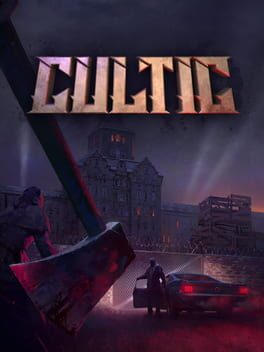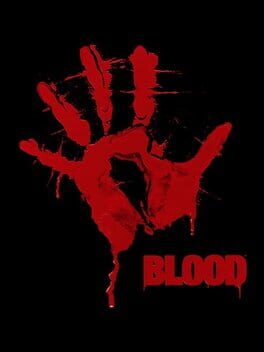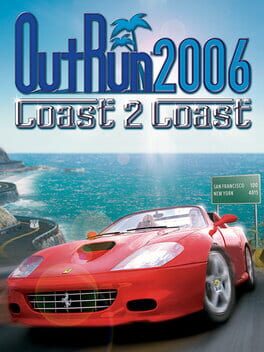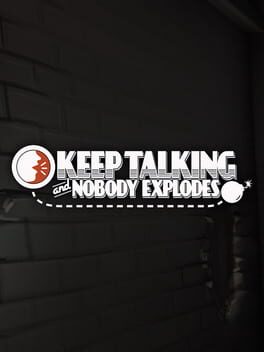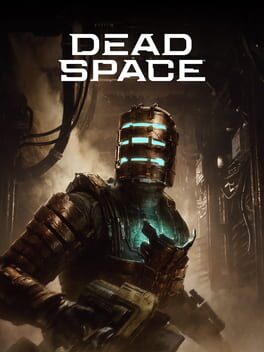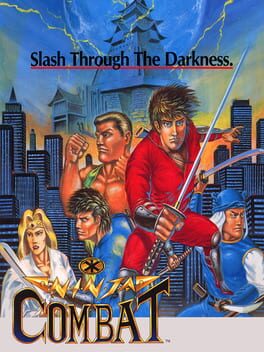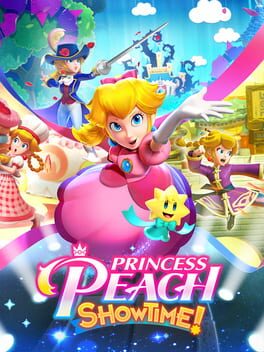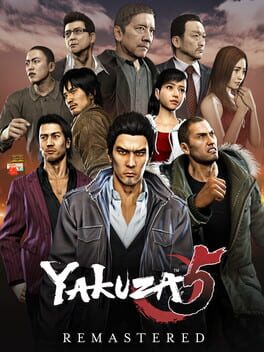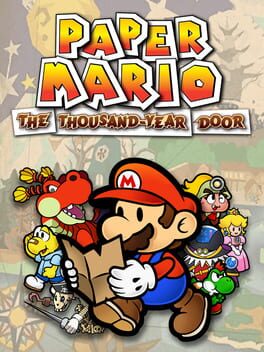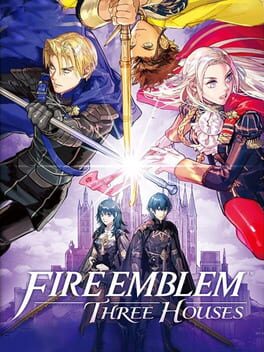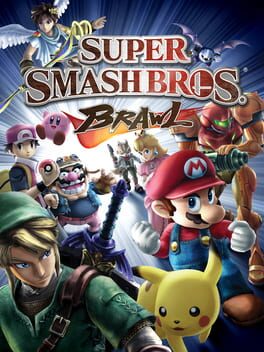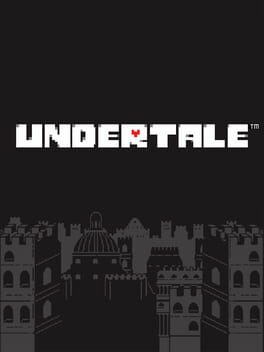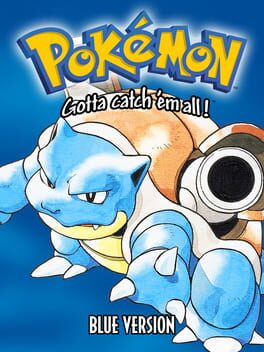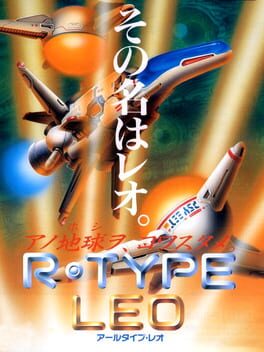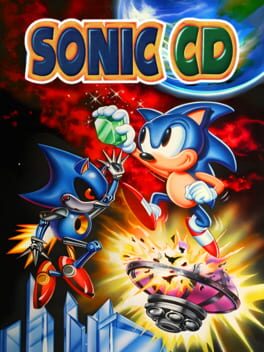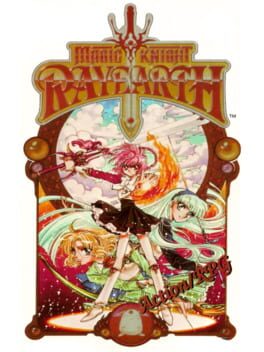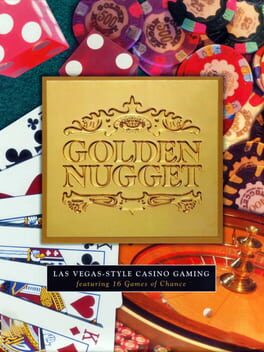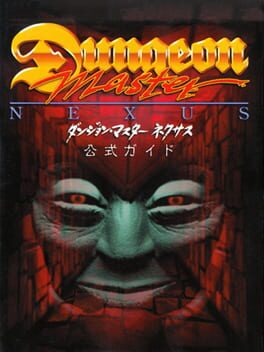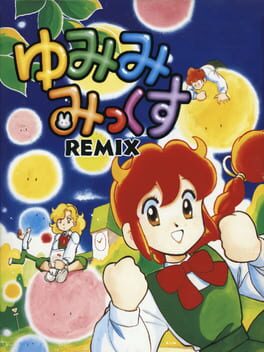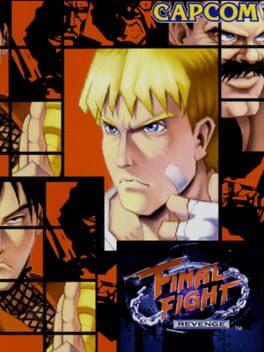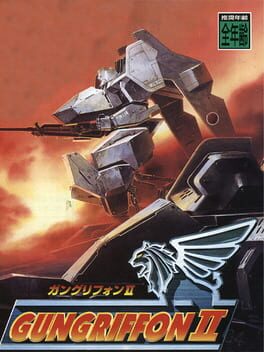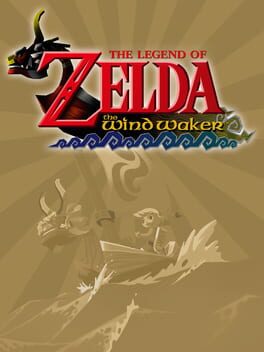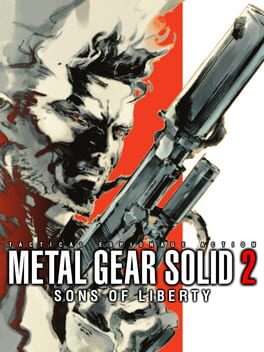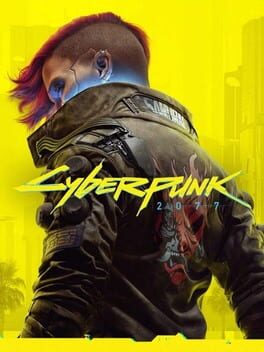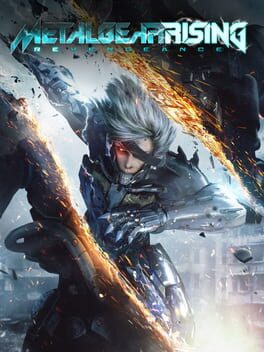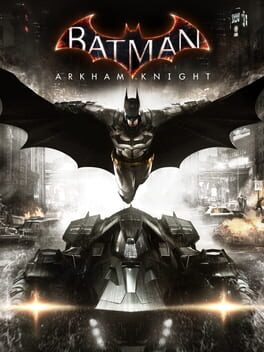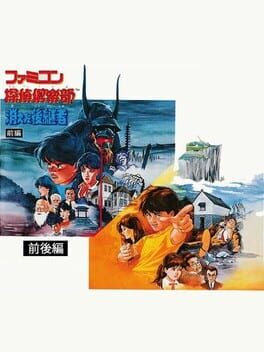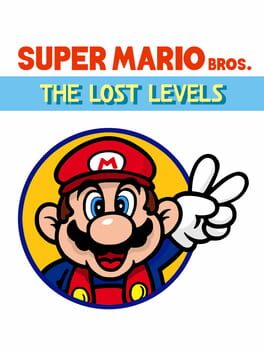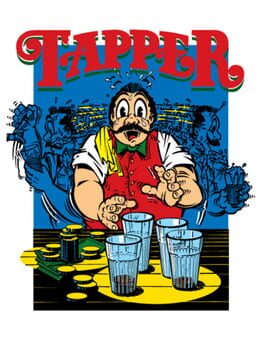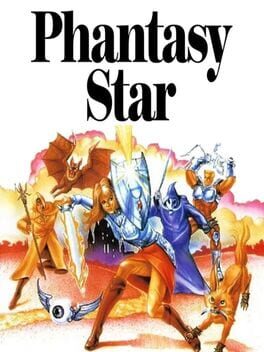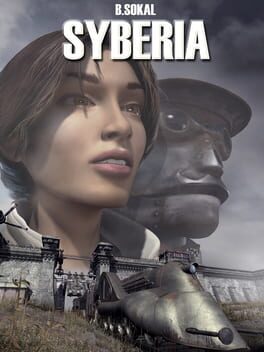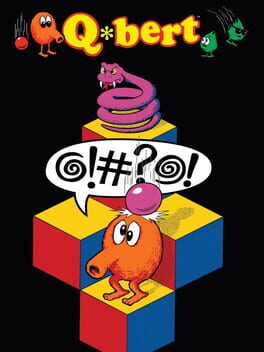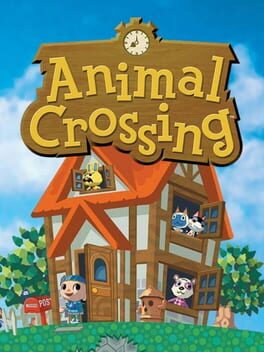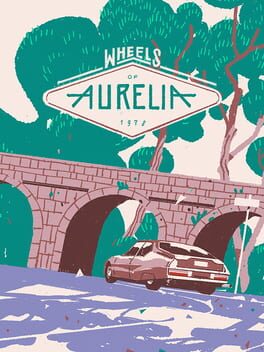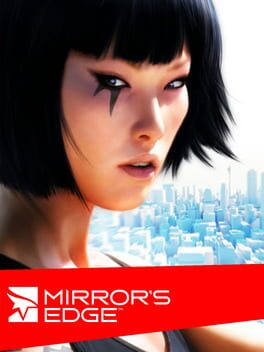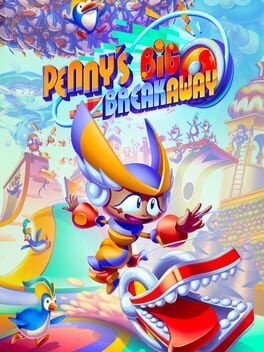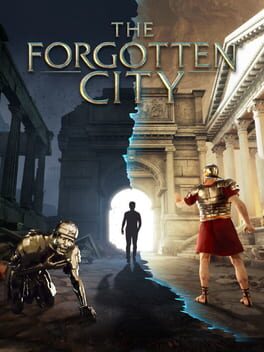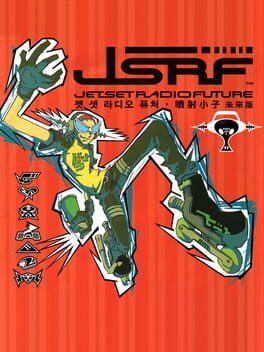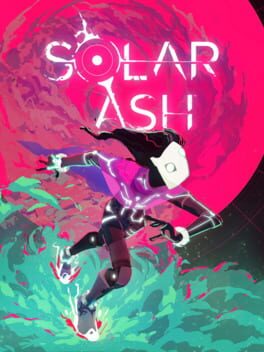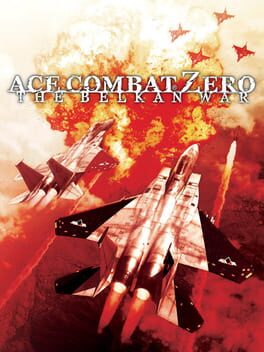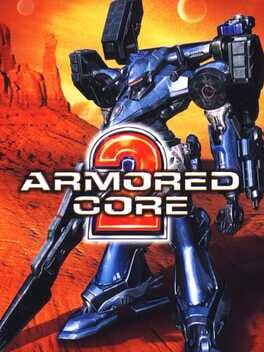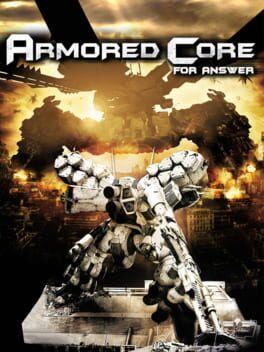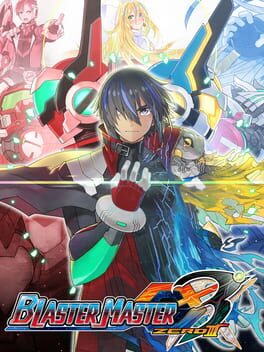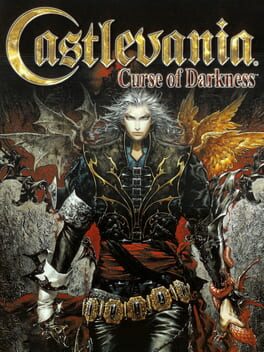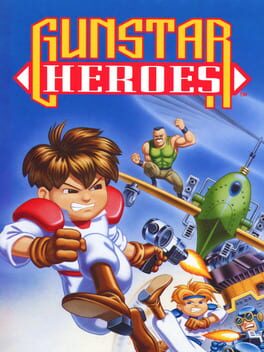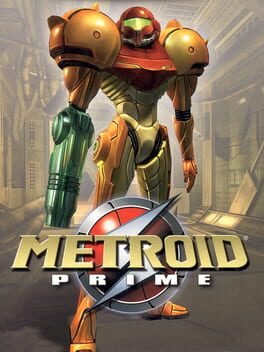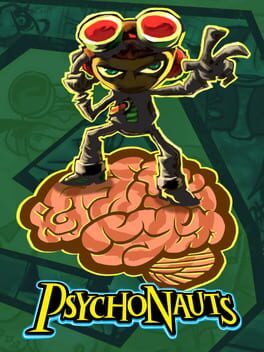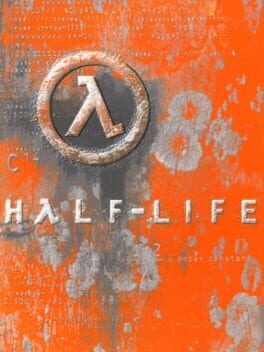DJSCheddar
1478 reviews liked by DJSCheddar
The Oregon Trail
1971
Cultic
2022
Blood
1997
This game is metal as hell.
On paper this should be something you’ve already seen, but in execution it isn’t like anything you’ve seen. Blowing up zombies with dynamite, blasting cultists with a double-barrel shotgun, eating hearts to heal instead of medpacks, everything in this game feels equal parts edgy and extremely fun. The main character, Caleb, is betrayed by the god he worships and comes back to life to get his revenge and after killing him, the words spoken from his mouth are “Good, bad… I’m the guy with the gun” and in the cutscene that plays second after he blasts a poorly modeled dude (the cutscenes in this game are something) with the tommy gun one-handed and just leaves without saying a single word like he didn’t just kill a demonic god.
Even if it’s really tough, the enjoyment I get from this game is simply unmatched. The variety in the arsenal is quite interesting, instead of a pistol as a one of the first guns you get (the actual first gun you get is a pitchfork), they give you a flare gun, which is fine to take out enemies one by one, but has a secondary fire that can take out a bunch of enemies by setting them on fire at the cost of like 6 flare ammo, but the gun you’ll be using the most is the sawn-off shotgun. A really, really powerful shotgun. If there’s one word to describe the arsenal in this game, it is powerful. Not just the shotgun is powerful, but also the dynamite - blowing stuff up is powerful, and you’ll be doing that A LOT, it’s even necessary to progress in certain moments so get used to it -, and therocket launcher sorry, the NAPALM launcher, which not only acts as a normal rocket launcher but can also put on fire nearby enemies due to splash damage, and even the tommy gun. If there’s one thing Blood has, it’s that it makes justice the word “power fantasy”.
It’s no secret that First Person Shooters have always been inspired by cinema. Duke Nukem is basically an Arnold Schwarzenegger knock-off. Blood is inspired by horror and gorefest movies. Every enemy has like two or three, probably more, different ways to die, but all of them can be blown up into pieces. Zombies’ heads fall off and you can kick them a soccer ball. While Caleb might not be the most memorable FPS character - although he's still a total badass -, Blood is a really memorable game. I would say that “it is great because it just wants you to have fun”, but basically every other game from that era just wanted you to have fun, ESPECIALLY First Person Shooters. What makes this game good is not what it wants but what it does, and what Blood does is putting a bunch of cultists and zombies gathered together in an enclosed space so you can use the alt fire of the spray can (did I mention there’s a makeshift flamethrower?) and watch all of them burn. At a time when videogames were at the center of discussion for allegedly promoting violence and satanism, Blood provides just that and goes full-on with it.
The levels look more like actual places and seem to be interconnected, at least in the first chapter, so there’s some kind of continuity to it, it feels like some kind of progress is being made. Unlike Duke Nukem 3D, in which levels consisted of a bunch of arenas that kind of resemble real life places but lack any continuity from one to another, here in the first chapter you wake up in a grave next to a chapel and the you blow up a hole in a wall that gets you to a train station in which you get on a train and the next level is in the Phantom Express and then you crash the train and now you’re at Dark Carnival, and there’s a secret level that takes you to the House of Horrors. It feels like you’re going somewhere, like progress is being made, even if the story isn't that important. This is what I like the most about the Cryptic Passage expansion, the continuity between levels. At the start of each level, most of the time, and not just on Cryptic Passage, you can turn around and see the place you just came from, and at the end of some levels you can even see the place you’re going. The level of detail in every level helps the sense of place. I mean, the devil is in the details, so…
Everything in this game screams personality. From the little nods to horror/slasher/B movies to the speed of the combat. Even if some of the later levels don’t live up to the greatness of the first episode, as well as some abrupt difficulty spikes - the balance is sometimes pretty weird, I had certain situations in which I’d round a corner to be greeted by a shotgun blast to the face I had no way of predicting. The alt fire of the dynamite makes it a timed explosive so it bounces on walls, you even have proximity and remote dynamite, but the correct way to use them is to throw them around a corner full of enemies you already know they’re there, but for that you have to see them before them see you so most of the time these options are useless and it’s best to roll with it, shotgun blast included. That is, unless the game expects me to quick-save quick-load every corner, in which scenario the tension and pace of the combat are gone -, it is still fun to blow up with dynamite everything that moves.
At the risk of sounding like an edgy teenager, I’ll say that gorefest movies or games are usually not my cup of tea when they're all about the gore and nothing else, but I can’t help it, Blood is just too goddamn fun.
Also, I forgot to mention that enemies like the zombie, the cultist, and probably some more are pixelated sprites of (or were modeled after) modified dolls/toys. Some other games did similar stuff; Human enemies in Rise of the Triad: Dark War were sprites of real people in costumes, you can find some recorded footage of the making of around the web. This kind of stuff is always super cool to see and brings an extra charm that games nowadays can't allow themselves to have.
On paper this should be something you’ve already seen, but in execution it isn’t like anything you’ve seen. Blowing up zombies with dynamite, blasting cultists with a double-barrel shotgun, eating hearts to heal instead of medpacks, everything in this game feels equal parts edgy and extremely fun. The main character, Caleb, is betrayed by the god he worships and comes back to life to get his revenge and after killing him, the words spoken from his mouth are “Good, bad… I’m the guy with the gun” and in the cutscene that plays second after he blasts a poorly modeled dude (the cutscenes in this game are something) with the tommy gun one-handed and just leaves without saying a single word like he didn’t just kill a demonic god.
Even if it’s really tough, the enjoyment I get from this game is simply unmatched. The variety in the arsenal is quite interesting, instead of a pistol as a one of the first guns you get (the actual first gun you get is a pitchfork), they give you a flare gun, which is fine to take out enemies one by one, but has a secondary fire that can take out a bunch of enemies by setting them on fire at the cost of like 6 flare ammo, but the gun you’ll be using the most is the sawn-off shotgun. A really, really powerful shotgun. If there’s one word to describe the arsenal in this game, it is powerful. Not just the shotgun is powerful, but also the dynamite - blowing stuff up is powerful, and you’ll be doing that A LOT, it’s even necessary to progress in certain moments so get used to it -, and the
It’s no secret that First Person Shooters have always been inspired by cinema. Duke Nukem is basically an Arnold Schwarzenegger knock-off. Blood is inspired by horror and gorefest movies. Every enemy has like two or three, probably more, different ways to die, but all of them can be blown up into pieces. Zombies’ heads fall off and you can kick them a soccer ball. While Caleb might not be the most memorable FPS character - although he's still a total badass -, Blood is a really memorable game. I would say that “it is great because it just wants you to have fun”, but basically every other game from that era just wanted you to have fun, ESPECIALLY First Person Shooters. What makes this game good is not what it wants but what it does, and what Blood does is putting a bunch of cultists and zombies gathered together in an enclosed space so you can use the alt fire of the spray can (did I mention there’s a makeshift flamethrower?) and watch all of them burn. At a time when videogames were at the center of discussion for allegedly promoting violence and satanism, Blood provides just that and goes full-on with it.
The levels look more like actual places and seem to be interconnected, at least in the first chapter, so there’s some kind of continuity to it, it feels like some kind of progress is being made. Unlike Duke Nukem 3D, in which levels consisted of a bunch of arenas that kind of resemble real life places but lack any continuity from one to another, here in the first chapter you wake up in a grave next to a chapel and the you blow up a hole in a wall that gets you to a train station in which you get on a train and the next level is in the Phantom Express and then you crash the train and now you’re at Dark Carnival, and there’s a secret level that takes you to the House of Horrors. It feels like you’re going somewhere, like progress is being made, even if the story isn't that important. This is what I like the most about the Cryptic Passage expansion, the continuity between levels. At the start of each level, most of the time, and not just on Cryptic Passage, you can turn around and see the place you just came from, and at the end of some levels you can even see the place you’re going. The level of detail in every level helps the sense of place. I mean, the devil is in the details, so…
Everything in this game screams personality. From the little nods to horror/slasher/B movies to the speed of the combat. Even if some of the later levels don’t live up to the greatness of the first episode, as well as some abrupt difficulty spikes - the balance is sometimes pretty weird, I had certain situations in which I’d round a corner to be greeted by a shotgun blast to the face I had no way of predicting. The alt fire of the dynamite makes it a timed explosive so it bounces on walls, you even have proximity and remote dynamite, but the correct way to use them is to throw them around a corner full of enemies you already know they’re there, but for that you have to see them before them see you so most of the time these options are useless and it’s best to roll with it, shotgun blast included. That is, unless the game expects me to quick-save quick-load every corner, in which scenario the tension and pace of the combat are gone -, it is still fun to blow up with dynamite everything that moves.
At the risk of sounding like an edgy teenager, I’ll say that gorefest movies or games are usually not my cup of tea when they're all about the gore and nothing else, but I can’t help it, Blood is just too goddamn fun.
Also, I forgot to mention that enemies like the zombie, the cultist, and probably some more are pixelated sprites of (or were modeled after) modified dolls/toys. Some other games did similar stuff; Human enemies in Rise of the Triad: Dark War were sprites of real people in costumes, you can find some recorded footage of the making of around the web. This kind of stuff is always super cool to see and brings an extra charm that games nowadays can't allow themselves to have.
Played a fair bit of this back at uni with friends as a party game, but recently me and a friend decided to plough through it and get all the bombs done up to section 6.
Keep Talking is quite a unique game, in that it fills a co-op puzzle niche that I've not really seen anything else attempt to fill. Most of the co-op puzzle games I've played have been more like escape-room like experiences, where you piece your collective information together to solve puzzles in a civilized and relatively slow-paced manner. Keep Talking, however, is an absolute whirlwind of activity. None of the puzzles are difficult to solve on their own, and instead 100% of the gameplay is on communication, speed and efficiency.
The breakneck pace you're forced to play at has some upsides and downsides. Especially in the later levels it can take a couple of attempts for both players to get back into the swing of things at the start of a play session. However, the intense nature of the game makes it hard to play for an extended period of time, meaning the actual window of time where both players are at their best can actually be frustratingly small. It also feels like some of the later levels encourage you to "cheat"; we ended up playing so much that it was impossible for the bomb operator not to remember a few simple instructions from the manual, and we quickly got into a routine of the operator finding the password module, reading out the first three dials, and then completing the simon module on their own while the expert works through the password. It can feel oddly unsatisfying when you realise you do just remember some of the rules, as it seems to go against the spirit of the game, but it seems pretty unavoidable.
I think the space Keep Talking occupies most succesfully is as a pick up and put down party game, ideally where the bomb operator hasn't played much of it before, and in this space it shines. It's a fun and hectic experience that no other game i know of can deliver. But there is so much late game content which doesn't fit in this model of play, and it's just a bit confusing to work out what the target audience of the more difficult bombs even is.
Keep Talking is quite a unique game, in that it fills a co-op puzzle niche that I've not really seen anything else attempt to fill. Most of the co-op puzzle games I've played have been more like escape-room like experiences, where you piece your collective information together to solve puzzles in a civilized and relatively slow-paced manner. Keep Talking, however, is an absolute whirlwind of activity. None of the puzzles are difficult to solve on their own, and instead 100% of the gameplay is on communication, speed and efficiency.
The breakneck pace you're forced to play at has some upsides and downsides. Especially in the later levels it can take a couple of attempts for both players to get back into the swing of things at the start of a play session. However, the intense nature of the game makes it hard to play for an extended period of time, meaning the actual window of time where both players are at their best can actually be frustratingly small. It also feels like some of the later levels encourage you to "cheat"; we ended up playing so much that it was impossible for the bomb operator not to remember a few simple instructions from the manual, and we quickly got into a routine of the operator finding the password module, reading out the first three dials, and then completing the simon module on their own while the expert works through the password. It can feel oddly unsatisfying when you realise you do just remember some of the rules, as it seems to go against the spirit of the game, but it seems pretty unavoidable.
I think the space Keep Talking occupies most succesfully is as a pick up and put down party game, ideally where the bomb operator hasn't played much of it before, and in this space it shines. It's a fun and hectic experience that no other game i know of can deliver. But there is so much late game content which doesn't fit in this model of play, and it's just a bit confusing to work out what the target audience of the more difficult bombs even is.
Dead Space
2023
Inessential.
Despite the many quality-of-life changes meant to bring this more in line with the rest of the series, like updating the Zero-G sections and letting you use your kinesis more offensively, the broad strokes of the game are surprisingly close to the original. A change I was really looking forward to was the “Intensity Director” which is meant to dynamically alter the mood of areas and what enemies will spawn, but in practice, this mostly seems to determine whether or not you’ll get ambushed while backtracking instead of radically altering the major combat encounter. It’s a nice thrill to occasionally get surrounded by enemies, but as with so many of the new features of the remake, it doesn’t wholly commit to this idea, more a proof-of-concept that could be really transformative if it was expanded on somewhere else. Basic Necromorphs are also substantially less threatening due to the fact that it’s surprisingly easy to stunlock them by stomping on them once their legs have been shot out, and for the sheer effectiveness of these newly revamped kinesis powers (encounters and the ammo economy needed to be dramatically changed to make threats meaningful the player).
Given that this production seems to owe so much to the success of the recent Resident Evil remakes, I wish it would’ve taken a cue from them and include some bolder pieces of design and pacing- throw in an extra Regenerator fight, change the order of levels, or go all the way and pull the best enemies from the entire series to give these fights an extra edge. There are earnest discussions to be had about what function the RE remakes serve (if they’re replacements or reimaginings) but at least they’re distinct- I’m compelled to go back to them from time to time!
Really, I think the hesitance to change to radically alter the structure and encounter design speaks to the real intent of this remake, which seems far more interested in making the narrative flow more seamlessly between this and Dead Space 2. Isaac Clarke more or less had to be invented as a character in the sequel, and that made the amount of screentime that was devoted to his guilt over Nicole all the more weightless- retconned baggage that hardly landed. The attempt to expand their relationship mostly works, the revelations here about how their relationship ended are much better about setting the groundwork for their arc in the sequel. For as strong as this dynamic, it seems to have come at the cost of much of the supporting cast; compared to their original versions, everyone on the Ishimura comes as the lifeless versions of themselves. Dr. Kyne and Dr. Mercer were amazing presences thanks to great performances by Keith Szarabajka and Navid Negahban respectively, but without that prior context, I’m not sure these new iterations of the characters will stay in the minds of those who’ve only played the remake.
The biggest sin is that the remake ends up being dreadfully boring to play through in practice, the threats so similar to the original that the horror doesn’t land and the action so easy to break that it actively feels like a regression from the constraints of the earlier version of combat design. There’s obvious passion for the project here, especially in some of the granular details, but seemingly not the broader vision needed to successfully combine the old and new ideas together.
Despite the many quality-of-life changes meant to bring this more in line with the rest of the series, like updating the Zero-G sections and letting you use your kinesis more offensively, the broad strokes of the game are surprisingly close to the original. A change I was really looking forward to was the “Intensity Director” which is meant to dynamically alter the mood of areas and what enemies will spawn, but in practice, this mostly seems to determine whether or not you’ll get ambushed while backtracking instead of radically altering the major combat encounter. It’s a nice thrill to occasionally get surrounded by enemies, but as with so many of the new features of the remake, it doesn’t wholly commit to this idea, more a proof-of-concept that could be really transformative if it was expanded on somewhere else. Basic Necromorphs are also substantially less threatening due to the fact that it’s surprisingly easy to stunlock them by stomping on them once their legs have been shot out, and for the sheer effectiveness of these newly revamped kinesis powers (encounters and the ammo economy needed to be dramatically changed to make threats meaningful the player).
Given that this production seems to owe so much to the success of the recent Resident Evil remakes, I wish it would’ve taken a cue from them and include some bolder pieces of design and pacing- throw in an extra Regenerator fight, change the order of levels, or go all the way and pull the best enemies from the entire series to give these fights an extra edge. There are earnest discussions to be had about what function the RE remakes serve (if they’re replacements or reimaginings) but at least they’re distinct- I’m compelled to go back to them from time to time!
Really, I think the hesitance to change to radically alter the structure and encounter design speaks to the real intent of this remake, which seems far more interested in making the narrative flow more seamlessly between this and Dead Space 2. Isaac Clarke more or less had to be invented as a character in the sequel, and that made the amount of screentime that was devoted to his guilt over Nicole all the more weightless- retconned baggage that hardly landed. The attempt to expand their relationship mostly works, the revelations here about how their relationship ended are much better about setting the groundwork for their arc in the sequel. For as strong as this dynamic, it seems to have come at the cost of much of the supporting cast; compared to their original versions, everyone on the Ishimura comes as the lifeless versions of themselves. Dr. Kyne and Dr. Mercer were amazing presences thanks to great performances by Keith Szarabajka and Navid Negahban respectively, but without that prior context, I’m not sure these new iterations of the characters will stay in the minds of those who’ve only played the remake.
The biggest sin is that the remake ends up being dreadfully boring to play through in practice, the threats so similar to the original that the horror doesn’t land and the action so easy to break that it actively feels like a regression from the constraints of the earlier version of combat design. There’s obvious passion for the project here, especially in some of the granular details, but seemingly not the broader vision needed to successfully combine the old and new ideas together.
Ninja Combat
1990
You know what I haven’t done in a hot minute or so? Make fun of ADK, so let’s do that again! I mean, why not, it should be a fun thing to do, and besides, not doing so has been eating at my soul. I have been too nice to them recently, with me actually somehow liking World Heroes 2 Jet, so it only feels right to go to one of their older products, to examine how bland and uninspired it is, and then point out all of the other ridiculous elements present in said product along the way. But what other ground have they covered? They’ve done fighting games, they’ve done platformers, they’ve done run ‘n guns, so what else can they screw up at… looking at list... a beat-’em-up? Oh, that’s perfect! So now, for most of you at home, let’s go ahead and talk about a game that you all have never heard of in your life, Ninja Combat.
Like you, I had no clue that this game existed until I decided to look it up for myself, and based on what I did see about it, it looked extremely underwhelming. It was a launch title for the Neo Geo systems back in the day, so that is to be expected, but that doesn’t automatically spell out the quality of a game. I mean, Super Mario World was a launch title, and we still love that game, so who’s to say that this game wouldn’t be any better or worse? Well, unfortunately though, it isn’t quite on the same level as Super Mario World, and it wasn’t bad enough to where I could have fun ripping it to shreds, so the most I can say is that it is just… there. It does it’s job, and I bet you could have a good time with it with the right person to join you, but if you aren’t immediately on board with what the game gives you from the minute you press the start button, then you are gonna be in for a very mediocre time.
The story is just as generic as the game itself, where the evil Shadow Family starts to take over New York with the help of their Ninja Tower and all the baddies that dwell within it, so it is up to the brothers Joe and Hayabusa, along with a few other faces they run into along the way, to storm the tower and take the family down, which can only be an exciting plot if you have never played any other game in your life, which, let’s be honest, the chances of this being someone’s first game are VERY slim. The graphics are ok, looking on the same level as all of ADK’s other games I have played so far, meaning that it looks on par with other Neo Geo titles, but somehow feels cheap and artificial when you play it, the music is fine, having decent tracks for the levels and boss fights, but they are gonna leave your mind just as quickly as the game itself when you are done with it, and the gameplay/control is very generic and simple for the genre, but somehow it feels more soulless and generic then most of the other beat-’em-up games I have ever played… but it somehow isn’t as bad as Rushing Beat, so it gets a gold star!
The game is your typical hack and slash beat-’em-up, where you take control of Joe, Hayabusa, or any of the other characters you meet along the way, take on seven different stages through several different generic environments on your way to take on whatever lies in the Ninja Tower, slice down plenty of enemies using plenty of different attacks, including a special attack that you can pull off if you have enough health, gather plenty of weapons to help you out along the way, as well as scrolls that can grant you increased strength and speed, along with extra lives at points, and take on plenty of bosses that do look threatening enough, but is about as challenging as breathing air… or at least, if you have infinite credits like I do. You see it, you know it, you love it, you know what you are getting into with the game, but as I have mentioned several times already, aside from one or two admirable aspects of the game, there isn’t really anything here to make this anything more than a generic time waster for a half hour before you never touch it again.
I will say, despite how generic and soulless the game is as a whole, I did like some aspects about it, such as how it handles additional characters and power-ups. Like I mentioned before, there are those scrolls that upgrade your character as you keep going, which is pretty sweet to get and hang onto, and for the first couple of stages, whenever you beat them, you end up unlocking a new character that you can switch to in-between stages, and they can be fun to mess around with, especially Musashi, who became my go-to character for the remainder of the game. However, that’s really where all of my compliments end, as when you play the game for yourself, you can feel all the care and love that the developers DIDN’T put into this, especially when it comes to your main attack, which is so broken that you can pretty much just spam it and take care of whatever comes your way. Yeah, bosses require a bit more strategy, but most of the other enemies aren’t a threat whatsoever, and you can defeat them all with one hand while checking your phone, which I’m pretty sure I did at one point.
In addition to that, there are also the typical roadblocks that I ran into when it came to what I don’t enjoy in these kinds of games, such as arcade syndrome, where the game throws many enemies at you at once and expects you to deal with them all before they get the chance to take you down, and there are repeating bosses, which aren’t too bad most of the time, but there was at least one instance where a boss was repeated TWICE, because I guess the devs just loved fighting him so much, they wanted us to feel that same love as well. With all that said and done, again, I will say that the game as a whole isn’t really all that bad. It accomplishes what it sets out to do, and again, if you need some way to kill 30 minutes, it is a good way to do so, but with nothing here to not only stand out, but also make it seem like the devs had any kind of idea how to make an engaging product, why would you choose to play it over anything else?
Overall, despite the fun-at-times combat and some gameplay features that I did end up liking, this is one of the most “nothing” beat-’em-ups that I have ever played, doing the bare minimum and showing off what the Neo Geo is capable of, but not giving any reason for players to return to it, or even choose it over the many better games in the genre that came out before and since. I would recommend it for those who are obsessed with the genre, as well as those who want an idea of one of the earliest points in the Neo Geo’s lifespan, but aside from that, I would just stick to other titles if you want some great beat-’em-up action with your friends. But, I will say, there is one thing very appealing about this game that only this company and SNK can manage to pull off to make me want to check out every one of their games from this era: the voice acting. Like most of these games, it is so terrible, that if you don’t have any interest in playing this yourself, at least give a listen to the “cutscenes” in the game. You won’t regret it.
Game #557
Like you, I had no clue that this game existed until I decided to look it up for myself, and based on what I did see about it, it looked extremely underwhelming. It was a launch title for the Neo Geo systems back in the day, so that is to be expected, but that doesn’t automatically spell out the quality of a game. I mean, Super Mario World was a launch title, and we still love that game, so who’s to say that this game wouldn’t be any better or worse? Well, unfortunately though, it isn’t quite on the same level as Super Mario World, and it wasn’t bad enough to where I could have fun ripping it to shreds, so the most I can say is that it is just… there. It does it’s job, and I bet you could have a good time with it with the right person to join you, but if you aren’t immediately on board with what the game gives you from the minute you press the start button, then you are gonna be in for a very mediocre time.
The story is just as generic as the game itself, where the evil Shadow Family starts to take over New York with the help of their Ninja Tower and all the baddies that dwell within it, so it is up to the brothers Joe and Hayabusa, along with a few other faces they run into along the way, to storm the tower and take the family down, which can only be an exciting plot if you have never played any other game in your life, which, let’s be honest, the chances of this being someone’s first game are VERY slim. The graphics are ok, looking on the same level as all of ADK’s other games I have played so far, meaning that it looks on par with other Neo Geo titles, but somehow feels cheap and artificial when you play it, the music is fine, having decent tracks for the levels and boss fights, but they are gonna leave your mind just as quickly as the game itself when you are done with it, and the gameplay/control is very generic and simple for the genre, but somehow it feels more soulless and generic then most of the other beat-’em-up games I have ever played… but it somehow isn’t as bad as Rushing Beat, so it gets a gold star!
The game is your typical hack and slash beat-’em-up, where you take control of Joe, Hayabusa, or any of the other characters you meet along the way, take on seven different stages through several different generic environments on your way to take on whatever lies in the Ninja Tower, slice down plenty of enemies using plenty of different attacks, including a special attack that you can pull off if you have enough health, gather plenty of weapons to help you out along the way, as well as scrolls that can grant you increased strength and speed, along with extra lives at points, and take on plenty of bosses that do look threatening enough, but is about as challenging as breathing air… or at least, if you have infinite credits like I do. You see it, you know it, you love it, you know what you are getting into with the game, but as I have mentioned several times already, aside from one or two admirable aspects of the game, there isn’t really anything here to make this anything more than a generic time waster for a half hour before you never touch it again.
I will say, despite how generic and soulless the game is as a whole, I did like some aspects about it, such as how it handles additional characters and power-ups. Like I mentioned before, there are those scrolls that upgrade your character as you keep going, which is pretty sweet to get and hang onto, and for the first couple of stages, whenever you beat them, you end up unlocking a new character that you can switch to in-between stages, and they can be fun to mess around with, especially Musashi, who became my go-to character for the remainder of the game. However, that’s really where all of my compliments end, as when you play the game for yourself, you can feel all the care and love that the developers DIDN’T put into this, especially when it comes to your main attack, which is so broken that you can pretty much just spam it and take care of whatever comes your way. Yeah, bosses require a bit more strategy, but most of the other enemies aren’t a threat whatsoever, and you can defeat them all with one hand while checking your phone, which I’m pretty sure I did at one point.
In addition to that, there are also the typical roadblocks that I ran into when it came to what I don’t enjoy in these kinds of games, such as arcade syndrome, where the game throws many enemies at you at once and expects you to deal with them all before they get the chance to take you down, and there are repeating bosses, which aren’t too bad most of the time, but there was at least one instance where a boss was repeated TWICE, because I guess the devs just loved fighting him so much, they wanted us to feel that same love as well. With all that said and done, again, I will say that the game as a whole isn’t really all that bad. It accomplishes what it sets out to do, and again, if you need some way to kill 30 minutes, it is a good way to do so, but with nothing here to not only stand out, but also make it seem like the devs had any kind of idea how to make an engaging product, why would you choose to play it over anything else?
Overall, despite the fun-at-times combat and some gameplay features that I did end up liking, this is one of the most “nothing” beat-’em-ups that I have ever played, doing the bare minimum and showing off what the Neo Geo is capable of, but not giving any reason for players to return to it, or even choose it over the many better games in the genre that came out before and since. I would recommend it for those who are obsessed with the genre, as well as those who want an idea of one of the earliest points in the Neo Geo’s lifespan, but aside from that, I would just stick to other titles if you want some great beat-’em-up action with your friends. But, I will say, there is one thing very appealing about this game that only this company and SNK can manage to pull off to make me want to check out every one of their games from this era: the voice acting. Like most of these games, it is so terrible, that if you don’t have any interest in playing this yourself, at least give a listen to the “cutscenes” in the game. You won’t regret it.
Game #557
You have chosen to read my Princess Peach: Showtime! review. This is on you, now.
I think it's worth reflecting on how Peach wasn't really even a character in the original Super Mario Bros. She was a destination. The MacGuffin you needed to reach in order to rightfully claim you'd won the game. The idea to expand beyond that in any way was largely an act of convience, as Fuji TV's Yume Kojo: Doki Doki Panic was rebranded as the second Super Mario game. They needed a roster of four heroes, and there had only been four sentient things in the Mushroom Kingdom that weren't enemies. They took the spritesheet for Lina and drew "The Princess" on top.
I don't point this out to demean or belittle Princess Peach. Far from it. The act of repurposing and rebranding is at the very core of what videogames are. Mario, himself, was the result of seeing what could be done with an unwanted Radar Scope arcade board, and missing out on the opportunity to use Paramount's Popeye characters. OXO, Tennis for Two and Spacewar! were all experiments to see if large-scale supercomputers designed for complex business calculations and global warfare could be used for the purpose of fun. Peach has quite rightly earned the title of Princess of Videogames. A direct descendant of the cathode-ray tube amusement device.
From her first playable appearance in Super Mario Bros. 2, she was treasured by little sisters, cartoon studios, and boys who valued the float-jump more than the societal pressures of homophobia and gender stereotypes. By Mario 64, her significance to the Mushroom Kingdom was fully fleshed-out, positioning the entire game within her castle, and illustrating her unwavering benevolence, ethereal presence, and also, her sense of fun with the introduction of her personally-commissioned Secret Slide. She was a true representative of videogames, and a welcoming presence for audiences who may have felt uninvited to the games gang.
In 2024, I feel Nintendo are more aware of the weight of their history. Back when they last tried this, with 2005's Super Princess Peach, there was an air of carelessness. It was a throwaway game, fobbed off to Chubby Cherub/Shrek: Reekin' Havoc devs, Tose, and launched to a market whose respect for Nintendo had already taken a beaten from the likes of DK: King of Swing, Super Mario Ball and Classic NES Series: Ice Climber. Now, Nintendo treat Peach with due reverence, having her host Universal Studios meet-and-greets in her own personal bandstand, as the highlight of millions of holidays. People are thrilled to meet her, regardless of how much spaghetti she's made for them.
Right now, we're in a very odd period for the Mario brand, overall. Nintendo have embraced the idea that there's no unified vision of what Mario is. In the last year, we've had a mainline 2D entry closely modelled on the art direction of Masanobu Sato, a major Hollywood movie that denied post-1994 backstories and reinstated the NES-era US canon, a remake of a very of-its-time mid-nineties Mario RPG, and the announcement of the remake of a very distinctly eccentric fan-favourite GameCube RPG. Mario has become Mr. Video again, appearing in all sorts of different projects, merely as a comforting presence. He's a doctor and an artist and a kart racer and an umpire and we're not supposed to take any of it very seriously.
The dynamic sits awkwardly in relationship to why New Super Mario Bros. took its iconography so seriously in the first place. Back then, it was a relief to see the series discard all the bullshit and get back on target, reinstating what was Real Mario Shit. Goombas were Goombas again, and if there were any weird offshot baddies, fans would need to adopt such convoluted nomenclature as "Mega Para-Biddybuddies". It felt like the programmers had taken more control, with the world defined by hard parameter references. There's a stiffness to that approach that I have a lot of affection for, and it was the lifeblood of the Wii U era (particularly in Europe and Japan). It brought us closer to the logic of the software, subconsciously making us better equipped to appreciate and understand it. It was fiercely objective. It's easy to see why this approach wouldn't resonate with the wider public, though. If Nintendo wanted to catch on to mainstream appeal, they'd need to foresake the concrete utility of their playing pieces and expand their surface-level appeal. During the promotion of the New Super Mario Bros. sequels, developers explained that Peach hadn't been made playable in the game because of how her float-jump would affect the balance of the level design. In Showtime, she doesn't even have the float-jump.
Ah - Here we are.
I don't really like Princess Peach: Showtime very much.
I could come out with excuses, justifications, characterisation discrepancies... I just think it's boring to play. Levels are formulaic and repetitive, there's little dexterity to its gameplay, the rewards system feels like you're playing the game wrong if you're not constantly digging at the scenery to find every hidden item, performance and presentation is way below where it ought to be for a game with this focus, yada yada yada... I don't think it really matters. I just didn't want to play the game very much. The first couple of days I had it, I was telling myself I was too busy to calm down and enjoy it. I spent multiple days away from it before completion, and only went back to it out of obligation. I really wanted to care less, and not bother coming back.
As much fondness as I may have for the character, I'm clearly not the target audience for this. And I don't mean to imply that it's a game strictly for young girls, either. But it probably is for fans of recent Yoshi games. I'm certainly not one of them. As I dodder around, looking at the nice artwork, but wondering what I'm supposed to be getting out of it. It's a bit of a shock to see Mystical Ninja's Etsunobu Ebisu come back to a directing role to make something so devoid of spark or humour. Though the different costumes grant Peach a range of diverse abilities, the structure of each introductory level is largely the same, and the bulk of her more intricate actions are automated. In a move that recalls Metroid: Other M, all core actions have been distributed between two face buttons, and if there's anything particularly acrobatic or impressive, it doesn't often feel like you were very involved in performing them.
Showtime is fun in theory. The level themes are bold and exciting, Peach's costumes and in-character voice clips are cute, there's a lot of great art and punny design. I saw one review compare it to Kirby and the Forgotten Land and became incensed. That's a game that loves being a game. It celebrates the medium, embraces all the tropes that come with being a platformer, and sets up young audiences to embark on a future, exploring many wonderful videogames. Showtime is like Paper Mario with all the jokes, strategy and compelling gameplay stripped out. It's an RPG without story or combat. If you wanted to dedicate a budget to having a team design a bunch of charming adventures for Princess Peach to go on, I can totally get behind that, but why make this game when your passions and energy were better suited to a series of YouTube shorts, or a pop-up book?
There's definitely things I wanted to like. I felt like I should have liked. There's several parts of the concept that feel like they're paying off on things they established with Peach's character years ago. The fact that Odyssey ended with her setting off to explore the world in a bunch of cute outfits feels like it was leading up to an idea like this. They're making a game with Cowgirl Princess Peach, for god's sake. How haven't I come away raving about it? It's just all so tame. Mermaid Peach sings underwater to guide helpful fish, and that sounds like something I should have adored, but they never take the next logical step with one of those trademark Nintendo Switch vocal themes. Why didn't they want this game to be brilliant?
Something that surprised me is how bothered I was by the stageplay concept. The notion that to some level, this was all pretend. That Peach is taking on the role of a character for each level. Her voice sounds different for a bunch of them. I don't really feel like this is a game about Peach. It's about her playing the part of generic characters. I didn't feel any sense of drama until the very end, when she emerges outside of the Sparkle Theatre, as herself. It was the first thing since the intro that the game was trying to convey as authentic. Maybe if I just believed in the game - like there was a real throughline that meant each level was an important new part of a story - I wouldn't have been so bored with it. You really don't have to do a lot to get me with this stuff. I honestly found myself crying when I first heard Odyssey attempt to finally convey Peach's perspective on her relationship with Mario. Is this what a good story has to offer a game? As it is, it felt like I'd bought a colouring-in book, and for some bizarre reason, it was important that I finish every page.
This is very much a 'me problem'. I hope I've established my criticisms as fiercely subjective. I can see some folk getting a lot out of this. I've heard some say that they loved Yoshi's Woolly World. I certainly don't want to convince Nintendo that people don't like Princess Peach games. It's just that I had to play through Sexy Parodius and Third Strike before I'd gotten through this, just to remind myself that I do enjoy playing videogames.
I think it's worth reflecting on how Peach wasn't really even a character in the original Super Mario Bros. She was a destination. The MacGuffin you needed to reach in order to rightfully claim you'd won the game. The idea to expand beyond that in any way was largely an act of convience, as Fuji TV's Yume Kojo: Doki Doki Panic was rebranded as the second Super Mario game. They needed a roster of four heroes, and there had only been four sentient things in the Mushroom Kingdom that weren't enemies. They took the spritesheet for Lina and drew "The Princess" on top.
I don't point this out to demean or belittle Princess Peach. Far from it. The act of repurposing and rebranding is at the very core of what videogames are. Mario, himself, was the result of seeing what could be done with an unwanted Radar Scope arcade board, and missing out on the opportunity to use Paramount's Popeye characters. OXO, Tennis for Two and Spacewar! were all experiments to see if large-scale supercomputers designed for complex business calculations and global warfare could be used for the purpose of fun. Peach has quite rightly earned the title of Princess of Videogames. A direct descendant of the cathode-ray tube amusement device.
From her first playable appearance in Super Mario Bros. 2, she was treasured by little sisters, cartoon studios, and boys who valued the float-jump more than the societal pressures of homophobia and gender stereotypes. By Mario 64, her significance to the Mushroom Kingdom was fully fleshed-out, positioning the entire game within her castle, and illustrating her unwavering benevolence, ethereal presence, and also, her sense of fun with the introduction of her personally-commissioned Secret Slide. She was a true representative of videogames, and a welcoming presence for audiences who may have felt uninvited to the games gang.
In 2024, I feel Nintendo are more aware of the weight of their history. Back when they last tried this, with 2005's Super Princess Peach, there was an air of carelessness. It was a throwaway game, fobbed off to Chubby Cherub/Shrek: Reekin' Havoc devs, Tose, and launched to a market whose respect for Nintendo had already taken a beaten from the likes of DK: King of Swing, Super Mario Ball and Classic NES Series: Ice Climber. Now, Nintendo treat Peach with due reverence, having her host Universal Studios meet-and-greets in her own personal bandstand, as the highlight of millions of holidays. People are thrilled to meet her, regardless of how much spaghetti she's made for them.
Right now, we're in a very odd period for the Mario brand, overall. Nintendo have embraced the idea that there's no unified vision of what Mario is. In the last year, we've had a mainline 2D entry closely modelled on the art direction of Masanobu Sato, a major Hollywood movie that denied post-1994 backstories and reinstated the NES-era US canon, a remake of a very of-its-time mid-nineties Mario RPG, and the announcement of the remake of a very distinctly eccentric fan-favourite GameCube RPG. Mario has become Mr. Video again, appearing in all sorts of different projects, merely as a comforting presence. He's a doctor and an artist and a kart racer and an umpire and we're not supposed to take any of it very seriously.
The dynamic sits awkwardly in relationship to why New Super Mario Bros. took its iconography so seriously in the first place. Back then, it was a relief to see the series discard all the bullshit and get back on target, reinstating what was Real Mario Shit. Goombas were Goombas again, and if there were any weird offshot baddies, fans would need to adopt such convoluted nomenclature as "Mega Para-Biddybuddies". It felt like the programmers had taken more control, with the world defined by hard parameter references. There's a stiffness to that approach that I have a lot of affection for, and it was the lifeblood of the Wii U era (particularly in Europe and Japan). It brought us closer to the logic of the software, subconsciously making us better equipped to appreciate and understand it. It was fiercely objective. It's easy to see why this approach wouldn't resonate with the wider public, though. If Nintendo wanted to catch on to mainstream appeal, they'd need to foresake the concrete utility of their playing pieces and expand their surface-level appeal. During the promotion of the New Super Mario Bros. sequels, developers explained that Peach hadn't been made playable in the game because of how her float-jump would affect the balance of the level design. In Showtime, she doesn't even have the float-jump.
Ah - Here we are.
I don't really like Princess Peach: Showtime very much.
I could come out with excuses, justifications, characterisation discrepancies... I just think it's boring to play. Levels are formulaic and repetitive, there's little dexterity to its gameplay, the rewards system feels like you're playing the game wrong if you're not constantly digging at the scenery to find every hidden item, performance and presentation is way below where it ought to be for a game with this focus, yada yada yada... I don't think it really matters. I just didn't want to play the game very much. The first couple of days I had it, I was telling myself I was too busy to calm down and enjoy it. I spent multiple days away from it before completion, and only went back to it out of obligation. I really wanted to care less, and not bother coming back.
As much fondness as I may have for the character, I'm clearly not the target audience for this. And I don't mean to imply that it's a game strictly for young girls, either. But it probably is for fans of recent Yoshi games. I'm certainly not one of them. As I dodder around, looking at the nice artwork, but wondering what I'm supposed to be getting out of it. It's a bit of a shock to see Mystical Ninja's Etsunobu Ebisu come back to a directing role to make something so devoid of spark or humour. Though the different costumes grant Peach a range of diverse abilities, the structure of each introductory level is largely the same, and the bulk of her more intricate actions are automated. In a move that recalls Metroid: Other M, all core actions have been distributed between two face buttons, and if there's anything particularly acrobatic or impressive, it doesn't often feel like you were very involved in performing them.
Showtime is fun in theory. The level themes are bold and exciting, Peach's costumes and in-character voice clips are cute, there's a lot of great art and punny design. I saw one review compare it to Kirby and the Forgotten Land and became incensed. That's a game that loves being a game. It celebrates the medium, embraces all the tropes that come with being a platformer, and sets up young audiences to embark on a future, exploring many wonderful videogames. Showtime is like Paper Mario with all the jokes, strategy and compelling gameplay stripped out. It's an RPG without story or combat. If you wanted to dedicate a budget to having a team design a bunch of charming adventures for Princess Peach to go on, I can totally get behind that, but why make this game when your passions and energy were better suited to a series of YouTube shorts, or a pop-up book?
There's definitely things I wanted to like. I felt like I should have liked. There's several parts of the concept that feel like they're paying off on things they established with Peach's character years ago. The fact that Odyssey ended with her setting off to explore the world in a bunch of cute outfits feels like it was leading up to an idea like this. They're making a game with Cowgirl Princess Peach, for god's sake. How haven't I come away raving about it? It's just all so tame. Mermaid Peach sings underwater to guide helpful fish, and that sounds like something I should have adored, but they never take the next logical step with one of those trademark Nintendo Switch vocal themes. Why didn't they want this game to be brilliant?
Something that surprised me is how bothered I was by the stageplay concept. The notion that to some level, this was all pretend. That Peach is taking on the role of a character for each level. Her voice sounds different for a bunch of them. I don't really feel like this is a game about Peach. It's about her playing the part of generic characters. I didn't feel any sense of drama until the very end, when she emerges outside of the Sparkle Theatre, as herself. It was the first thing since the intro that the game was trying to convey as authentic. Maybe if I just believed in the game - like there was a real throughline that meant each level was an important new part of a story - I wouldn't have been so bored with it. You really don't have to do a lot to get me with this stuff. I honestly found myself crying when I first heard Odyssey attempt to finally convey Peach's perspective on her relationship with Mario. Is this what a good story has to offer a game? As it is, it felt like I'd bought a colouring-in book, and for some bizarre reason, it was important that I finish every page.
This is very much a 'me problem'. I hope I've established my criticisms as fiercely subjective. I can see some folk getting a lot out of this. I've heard some say that they loved Yoshi's Woolly World. I certainly don't want to convince Nintendo that people don't like Princess Peach games. It's just that I had to play through Sexy Parodius and Third Strike before I'd gotten through this, just to remind myself that I do enjoy playing videogames.

